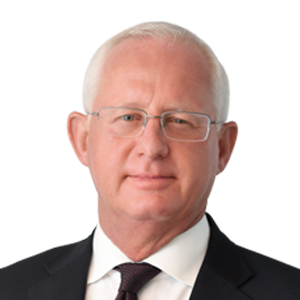Introduction and Background
The Government of the Lao PDR (“GOL”) has engaged in reforms since the mid-1980s to develop a market-oriented economy, including streamlining regulatory requirements and promoting foreign investment. In the past, the provision of public infrastructure and services has primarily relied on funding allocated from the State budget and foreign developmental aid.[1] However, there is now a move to mobilize large-scale investment from the private sector to fund the development of transportation infrastructure (road, transmission, and railway networks) and other public amenities to boost economic growth.
In part in response to the infrastructure gap and to improve the delivery and performance of public infrastructure and services, the GOL introduced the Decree on Public-Private Partnership (№ 624/GOV, 21 December 2020) (“PPP Decree”) to regulate PPPs in the Lao PDR. The PPP Decree consolidates the investment requirements, investment structures, and procedures for the proposals, bidding, and awarding of PPP projects. The PPP Decree represents a key step to enhancing the commercial viability of PPP projects in the Lao PDR.
Regulatory Framework
The PPP Decree defines a “PPP” as “activities of the partnership between the public sector and the private sector or activities fully invested by the private sector in public projects such as projects for new construction, rehabilitation of basic infrastructures or delivery of public services including projects for development of other activities such as tourism, agriculture, energy, mines, etc. under a Partnership Contract with certain defined time duration for running business according to the laws.”[2]
The PPP Decree envisages two broad categories of PPPs: (i) where the GOL is a partner in the investment with the private sector investor; or (ii) where the private sector investor fully funds the investment in a public project, such as projects for new construction, rehabilitation of infrastructure, or delivery of public services.[3]
The PPP Decree further lists eight different types of investment models for PPPs,[4] while also leaving open the possibility of other investment structures, as may be determined by the GOL. These investment models are as follows:
- Design-Build-Finance-Operate (“DBFO”);
- Design-Build-Operate (“DBO”);
- Build-Operate-Transfer (“BOT”);
- Build-Own-Operate-Transfer (“BOOT”);
- Build-Own-Operate (“BOO”);
- Build-Transfer-Operate (“BTO”);
- Build-Lease-Transfer (“BLT”); and
- Operation and Maintenance (“O&M”),
Each PPP must meet the following criteria:[5]
- have a partnership contract between the public sector investor (GOL or a State-owned enterprise) and the private investor;
- be a project for the construction or rehabilitation of infrastructure or delivery of public services, with emphasis on the outputs and benefits of the project;
- define the risk allocation for the project, such as construction risk, market risk, operational risk, currency and revenue risk, and obligations of the project company based on efficiency and effectiveness assurance of the investment;
- assure the rights and benefits of the service provider and services users;
- have an open and transparent tendering process in compliance with the PPP Decree and applicable Lao PDR laws via a public bidding process for that PPP (regardless of whether the PPP originated from a solicited proposal (i.e., from the relevant State sector and based on that sector’s strategic plan) or an unsolicited proposal (i.e., from either the relevant State sector or the private sector for a project that is not part of a State investment plan); and
- include a handover or transfer of the project back to the public sector after the expiry of the PPP agreement (except for BOO projects).
The PPP Decree does not provide guidance on determining the appropriate investment model for a given project. Instead, the Decree provides that this determination is done by taking into account the project’s efficiency, size, nature, cost, and special features on the basis of the feasibility study.[6]
The PPP Decree is the first regulation dedicated solely to PPP projects, providing a framework for implementing PPPs. However, the PPP Decree is itself an implementing regulation of the Law on Investment Promotion (№ 14/NA, 17 November 2016) (“Investment Promotion Law”) and Law on State Investment (№ 72/NA, 15 December 2015) (“State Investment Law”), and must be read in conjunction with these laws. Additionally, general regulations governing foreign investment and sector-specific regulations (such as the Law on Electricity (№ 19/NA, 9 May 2017) contain various provisions on the assessment, award, and contract terms of PPPs.
The GOL must comply with the State Investment Law and other regulations governing the use of State funds when the investment is funded from the State budget (as expressly contemplated under the definitions for the DBFO, DBO, BLT, and O&M models).[7] In addition, where the investment model assumes that the PPP project company will deliver the services directly to the State (for example, as contemplated under the DBFO, DBO, BTO, BLT, and O&M models), the GOL must also comply with the Law on Public Procurement (№ 30/NA, 2 November 2017) (“Public Procurement Law”) and other regulations governing public procurement.[8]
The Ministry of Planning and Investment (“MPI”) is the supervisory authority of PPPs, acting as the focal point for coordination with the relevant sectoral authorities and negotiating and signing the PPP agreements on behalf of the GOL.[9] The two PPP procurement authorities under the PPP Decree, the Committee for the Promotion and Management of PPPs (“CPMPPP”) and the Partnership Office (“PPP Unit”), are part of the MPI.
The CPMPPP is responsible for, among other things:[10]
- evaluating PPP projects, including the review and approval required for PPP projects to proceed to the next stage in the development process (e.g., by reviewing feasibility studies, environmental and social impact assessments, and the PPP agreement and providing its positive recommendation on the PPP to the MPI or GOL (or other relevant issuing authority);[11]
- formulating PPP plans and policies; and
- supervising the PPP Unit and the evaluation of PPP projects.
The PPP Unit acts as the secretariat of the CPMPPP and is responsible for, among other things:
- evaluating PPP projects, including the initial review of unsolicited proposals, feasibility studies, and tender documents before submission to the CPMPPP for approval;[12]
- managing the use of the PPP project preparation fund;
- providing tender notifications via mass media;
- preparing the draft PPP agreement (i.e., partnership contract) and negotiating the final PPP agreement with the winning bidder; and
- preparing the PPP project pipeline.[13]
The PPP Unit functions as the primary point of contact for PPP investors. There is considerable overlap between the PPP procurement authorities under the PPP Decree and the foreign investment authorities under the Investment Promotion Law. The CPMPPP has the same composition as the Investment Promotion and Supervision Committee under the Investment Promotion Law.[14] The PPP Unit has the same composition as the One-Stop Service Office under the Investment Promotion Law.[15]
Depending on the total investment value and the nature of the project, a PPP project may require authorization from one or more of the authorities listed in the below table.[16]
Asian Development Bank, “Lao PDR Public-Private Partnership Policy”, (2013) <https://www.adb.org/sites/default/files/linked-documents/46059-002-sd-06.pdf>.
Article 2, PPP Decree.
Articles 8-10, PPP Decree.
Articles 11-19, PPP Decree.
Article 20, PPP Decree.
Article 21, PPP Decree.
Articles 12, 13, 18, and 19, PPP Decree; Articles 2 and 6, State Investment Law.
Articles 12, 13, 17, 18, and 19, PPP Decree; Articles 2 and 6, Public Procurement Law.
Articles 65 and 66, PPP Decree.
Article 62, PPP Decree.
Articles 24, 25, 27, and 37, PPP Decree.
Articles 25, 26, 27, 31, and 37, PPP Decree.
Article 64, PPP Decree.
Article 61, PPP Decree.
Article 63, PPP Decree.
Article 28, PPP Decree.
|
Issuing Authority
|
Conditions
|
Example
uses 2
|
|
National Assembly |
|
|
|
Provincial Assemblies |
|
|
|
GOL |
|
|
Market Snapshot
The Lao PDR does not provide a publicly available database on the number of PPP projects undertaken. According to the World Bank’s Private Participation in Infrastructure data visualization page, there have been a total of 34 PPP projects in the Lao PDR, with a total investment value of USD 23.658 billion.[17] The sector with the highest investment is the energy sector, comprising 29 projects with an investment value of approximately USD 17.8 billion. This is followed by the transportation sector, comprising one railway project with an investment value of USD 5.7 billion. As the PPP Decree was only enacted in January 2021, existing PPP projects would have been directly negotiated, awarded, and implemented on a concession model under the Investment Promotion Law.
Competitive bidding for PPP projects is still quite novel in the Lao PDR. Where the GOL participated in a PPP project, the GOL participated directly through the Ministry of Finance (acting as shareholder on behalf of the GOL) or indirectly through State-owned enterprises.
Although the PPP Decree does not list any specific sectors targeted for investment, the PPP Decree requires that a PPP proposal (whether solicited or unsolicited) must relate to “a significant project,” use “new technology and high innovation,” and deliver “broad socio-economic benefits.”[18]
Key Issues for International Investors
While the enactment of the PPP Decree clarifies the procedural aspects for the proposal, bidding, and implementation of PPP projects, the PPP Decree would benefit from the GOL’s development of complementary PPP policies and guidelines that provide detailed guidance to both GOL personnel and potential bidders on how to create and evaluate PPP projects.
Several issues impact the viability of PPP projects in the Lao PDR and are relevant to an international investor’s decision to participate in a PPP project. A presentation on the Lao PDR’s PPP ecosystem prepared by the PPP Unit of the MPI in June 2022[19] lists five key issues relating to the difficulty of implementing PPPs in Laos, namely: (i) limited government funding; (ii) lack of PPP pipeline projects; (iii) limited human resources to support PPPs; (iv) lack of experience with the PPP process; and (v) lack of professional PPP marketing (to potential investors).
The Way Forward
Although the PPP Decree clarifies the PPP regime, the actual implementation of PPP projects under the PPP Decree remains unclear in practice, given the newness of the PPP regulatory framework and the issues mentioned in Section 4 above. PPP investors can expect many points to be negotiated on a case-by-case basis. Despite this, the PPP Decree represents a crucial step in developing the Lao PPP regulatory framework and, therefore, the viability of PPPs as both a procurement mechanism and a foreign investment opportunity in the Lao PDR.
Further Reading
- Lao PDR Ministry of Planning and Investment – Investment Promotion Department Official Website
- The World Bank Public-Private Partnership Legal Resource Centre PPP Unit Lao PDR
- The World Bank, Infrastructure Finance, PPPs & Guarantees Official Website
- The World Bank, Potential Benefits of Public-Private Partnerships
- The World Bank, ‘Private Participation in Infrastructure (PPI): 2021 Half Year Report’.
This publication is intended to provide a high level overview of PPPs in Laos. It is provided for general informational purposes only and should not be construed as legal advice. King & Wood Mallesons does not practice the law of Laos, and works closely with local lawyers to support our clients' needs in Laos. We are grateful to DFDL for their co-operation on this publication.
World Bank, “PPP Visualization Dashboard” (2022) <https://ppi.worldbank.org/en/visualization#sector=Airports%2CRailways&status=&ppi=&investment=®ion=&ida=&income=&ppp=&mdb=&year=&excel=false&map=LA&header=true>.
Article 23, PPP Decree.
Phouvong Phaophongsavath, PPP Unit, “Laos’ PPP Ecosystem – Current Development and Challenges – Seventh Meeting of the Infrastructure Financing and PPP Network of Asia and Pacific”, Investment Promotion Department, Ministry of Planning and Investment (15-16 June 2022) <https://www.unescap.org/sites/default/d8files/event-documents/Session%201_Laos.pdf>.





